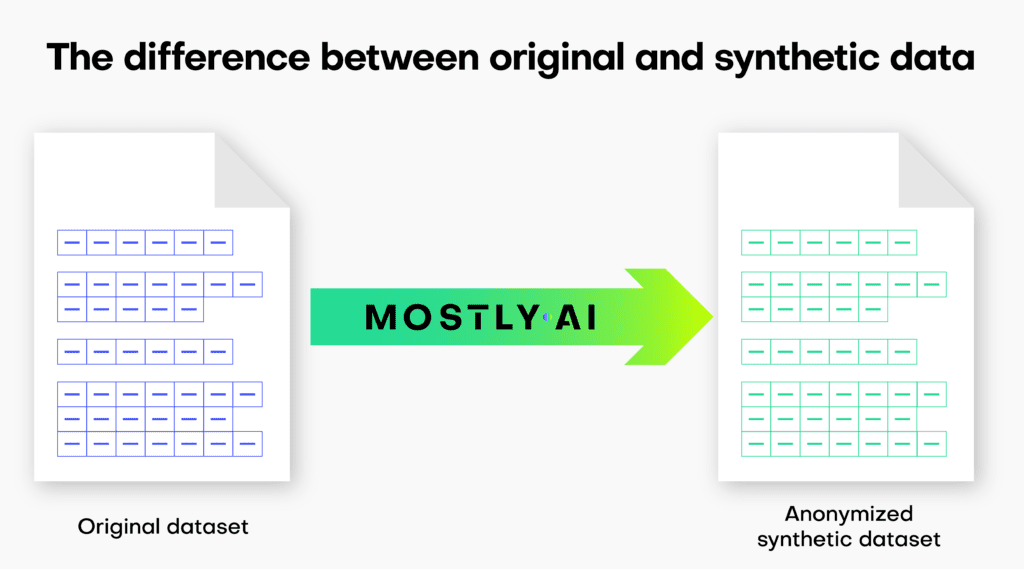What is synthetic data?
Different types of synthetic data and how they compare
AI-generated synthetic data is sample based. In order to generate it, you need a large enough sample dataset for the Generative AI models to learn from. The models use the original data as an input to learn the properties of that data to a very high degree. The resulting synthetic data looks and feels like the original data and contains all the relevant statistical information.
Mock data generators do not require data samples. Instead the user needs to define the rules (or randomness) how the data is created. But since these rules can become very complex very quickly, as a consequence the resulting synthetic data contains no relevant statistical information.
Another important difference is between structured and unstructured synthetic data. An example for unstructured synthetic data are synthetic images and video. Structured synthetic data is tabular data, where data points and their relationships are both important properties. Examples of tabular data include financial transaction records, patient journeys and CRM databases. Most of these types of data describe human behavior in a chronological way and is commonly referred to as behavioral or time-series data.
MOSTLY AI is the pioneer in the space of AI-generated structured synthetic data and we will focus on that for the remainder of this page.

What is synthetic data used for?
What is AI powered synthetic data generation and how does it work?
Synthetic data subjects look real, but they are AI-generated and are completely artificial. When generating synthetic data, it's extremely important to prevent the algorithm from overfitting to the original data. Overfitting means the AI could potentially learn "too well", memorize original data and then accidentally leak original data points during the inference phase.
Not all synthetic data generators perform well and that's why you want to make sure to work with synthetic data generators of highest quality.
Synthetic data is safe and fully anonymous
AI-generated synthetic data offers a great alternative where privacy is preserved without data utility loss!
Why are data scientists and data managers interested in synthetic data generation tools?
But there is another area where synthetic data plays an increasingly important role: Explainable AI. Explainability and governance of AI/ML models can greatly benefit from synthetic data, for example by providing data to stress-test models with outliers and diverse datasets.
Synthetic data for AI and machine learning is more flexible than real data
What are use cases for synthetic data?
Typical use cases include: AI training, analytics, software testing, demoing, and building personalized products.
For example, synthetic data versions of customer databases, patient journeys, medical records or transaction data are used by companies to make data driven decisions while respecting the privacy of their customers. Synthetic data is an industry-agnostic solution, used across various fields from finance and healthcare to insurance and telecommunications.
Real life examples of synthetic data projects
How does synthetic data compare to other data anonymization techniques?
Even worse - a lot of companies are equating pseudonymization with anonymization. But from a legal perspective, pseudonymized data is still personal data. And it needs to be treated and protected as just that.
How good is the quality of synthetic data?
The benefits of synthetic data continue to evolve
The potential of cross-industry collaboration
Synthetic data increases efficiency and profitability
Synthetic data is highly flexible
- Gartner